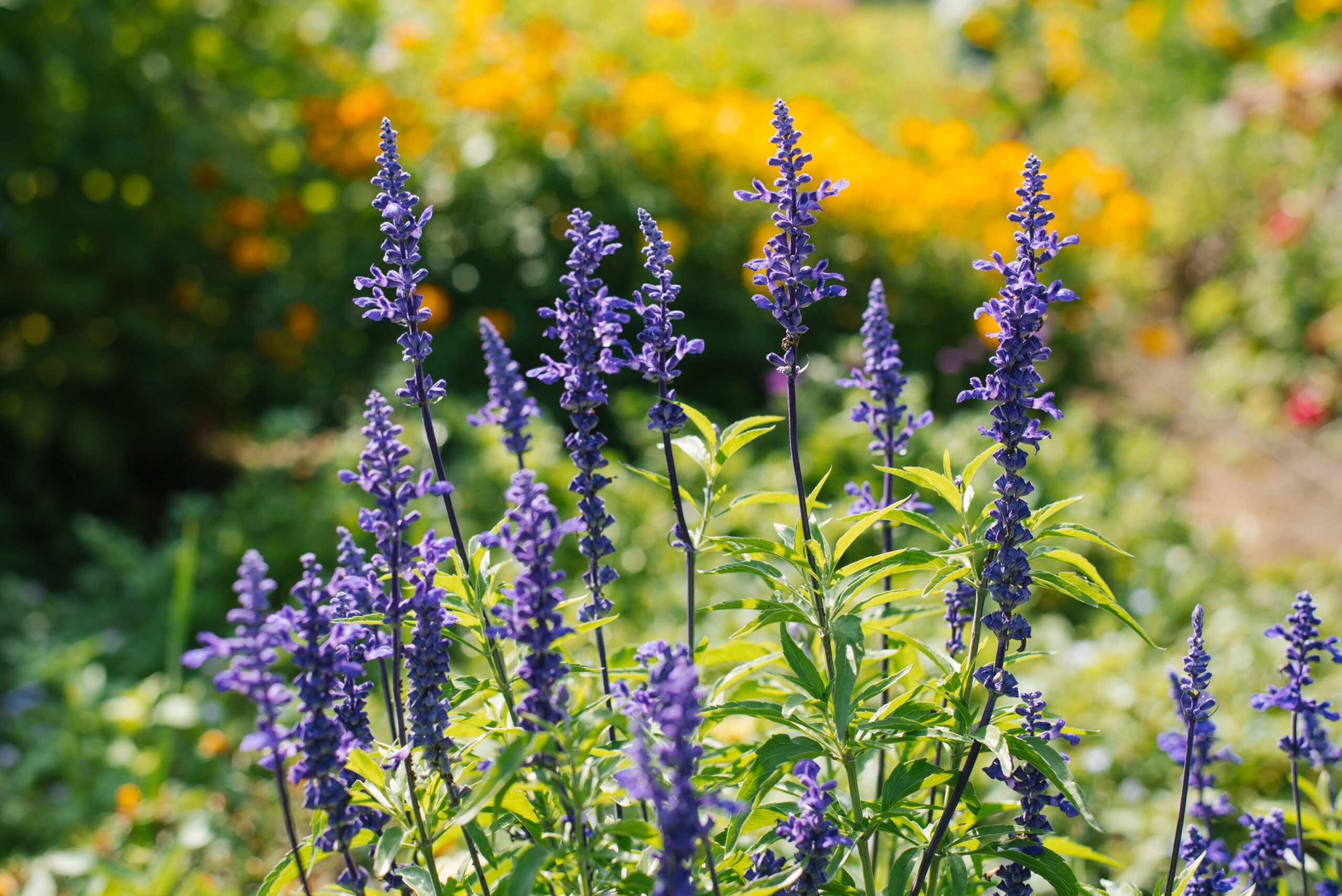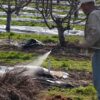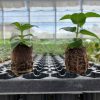An important part of maximizing your mycorrhizae return on investment is having the best technology available to achieve the objective. In mycorrhizal inoculum use, the best technology is a multiple-species inoculum. Let me use an analogy to better explain my previous statement. In this analogy, you can think of each mycorrhizal species as a tool. Suppose it is the weekend and you have your list of home projects. Would you want to start your day with just one tool or multiple tools? Let us say that one tool is a screwdriver. Now a screwdriver is a very handy and valuable tool, but it cannot accomplish the same tasks as if you had the same screwdriver, a pair of plyers, a hammer, and a saw. When you use a mycorrhizal inoculum product with multiple species, your toolbox is fuller, and your plants have more tools available to capture more of the nutrients you apply.
Plants Connect with Multiple Species
Plants naturally connect and establish relationships with multiple species of mycorrhizae. That is how plants in nature survive and thrive. The plant controls this relationship. When the plant needs something (nutrients or water) that it cannot supply with its own roots and root hairs, it turns on one of the species of mycorrhizae it is connected to, to supply the need that is in deficit. The plant selects the mycorrhizal species that is best able to fulfill the nutrient need. Each of the species of mycorrhizae has a unique functional profile in its ability to secure and supply nutrients. The plant turns each of these connections on and off throughout the growing cycle as the plant’s needs vary and the availability of nutrients fluctuates. An overview of the benefits of multiple mycorrhizal species can be found in a previous article, Four Species is Better than One.
Nutrient Supply Chain Management
Mycorrhizae survival in the rhizosphere is dependent on receiving a consistent supply of sugars and lipids from the plant. They exchange the water and nutrients they secure from the rhizosphere with the plant for the needed source of nutrients (sugars and lipids). The plant and the mycorrhizae barter to determine the exact exchange rate. This process for endo mycorrhizae happens in specialized structures called arbuscules. Mycorrhizae can store nutrients during times of excess and make them available during times of need by the plant. Excess nutrients are stored in structures called vesicles. These processes are independent of nutrient source type. Since the long-term livelihood of the mycorrhizae is linked to the long-term livelihood of the plant, the mycorrhizae will act as a nutrient buffer moderating the supplies of nutrients made available to the plant. The presence of these specialized structures supports the commonly used name for endo mycorrhizae as Vesicular Arbuscular Mycorrhizae (VAM).
- Arbuscules – Mycorrhizal hyphal structures within the host plant roots that serve as the site of nutrient exchange between the plant and the mycorrhizae. They look like little trees under the microscope because they have many branches. In exchange for the nutrients, the plant supplies carbon (sugars and lipids) to the mycorrhizae.
- Vesicles – Mycorrhizal storage structures within the roots that store nutrients. Excess nutrients are stored by the mycorrhizae for later bartering with and supplying to the plant.
- Factoid – To feed the mycorrhizae, the plant produces more chlorophyll so they can undergo more photosynthesis, which produces more sugar and lipids. This increased chlorophyll often makes mycorrhizal plants a darker green color compared with non-mycorrhizal plants.
Finding and Modifying Nutrients
One of the more valued traits of mycorrhizae is their ability to find and modify nutrients found in the soil and transform them into a form the plant can use. Mycorrhizae can do this work by themselves or can work with helper bacteria (MHB) to accomplish this task. Many nutrients become unavailable once they are applied to a growing mix. Mycorrhizae can transform those locked-up nutrients and lesser available organic nutrients into forms the plant can readily use. Nitrogen volatilization can also be reduced when mycorrhizae are in use.
- Mycorrhizae helper bacteria (MHB) form symbiotic relationships with both ectomycorrhiza and arbuscular mycorrhizae. These bacteria can be both Gram-negative and Gram-positive. Mycorrhizae helper bacteria enhance the growth and function of the mycorrhizae. These improvements subsequently increase the positive impacts of mycorrhizal usage for the plant. Specific benefits include improved nutrient uptake for both the mycorrhizae and the plant; and the ability to alter the EC of the soil. The most common mycorrhizae helper bacteria genera are Pseudomonas and Streptomyces. Actinovate (Streptomyces) is an example of an industry-used mycorrhizae helper bacteria.
Highly Effective Hyphae Make It Happen
I know I am repeating what I have mentioned in previous articles, but the key to the success of mycorrhizae is the mycorrhizal hyphae. Mycorrhizal hyphae can expand the root absorptive area of a plant by up to fifty (50) times.
- Mycorrhizal hyphae are highly branched fungal filaments (think of them as fungal roots) that constitute the mycelium network of the fungus. They can connect with soil particles, form a connection between plants, and interact with soil microbes.
- Mycorrhizal hyphae are better than roots at absorption. Nutrient absorption occurs along the entire length of the hyphae compared with just the tip for roots and root hairs.
- Mineral nutrient uptake through hyphae can come from both the soluble and insoluble pool of nutrients. And to ensure uptake efficiency, mycorrhizal hyphae allow for greater inflows through their system.
Timing is Key
The most cost-effective and benefit-providing time to apply mycorrhizae is during propagation or before planting if you purchase plugs or rooted liners. This will allow you as the grower to maximize the time you benefit from the mycorrhizae use.
Get in Contact
If you have any questions about anything covered in this article or MycoApply Mycorrhizae, please contact your local Mycorrhizal Applications Representative or call 866-476-7800 or email us at inquiries@mycorrhizae.com.
Article by: Blair Busenbark, Mycorrhizal Applications, Sales and Commercial Marketing Manager







